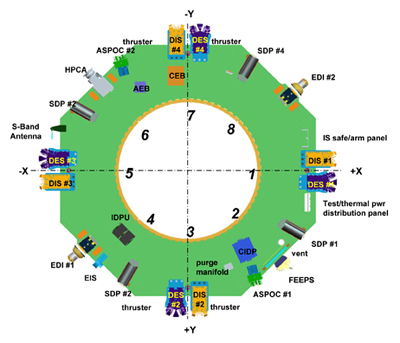 The four MMS spacecraft will carry identical instrument suites of plasma analyzers, energetic particle detectors, magnetometers, and electric field instruments as well as a device to prevent spacecraft charging from interfering with the highly sensitive measurements required in and around the diffusion regions. The plasma and fields instruments will measure the ion and electron distributions and the electric and magnetic fields with unprecedentedly high (millisecond) time resolution and accuracy. These measurements will enable to MMS to locate and identify the small (1-10 km) and rapidly moving (10-100 km/s) diffusion regions, to determine their size and structure, and to discover the mechanism(s) by which the frozen-in condition is broken, the ions and electrons become demagnetized, and the magnetic field is re-configured. MMS will make the first unambiguous measurements of plasma composition at reconnection sites, while energetic particle detectors will remotely sense the regions where reconnection occurs and determine how reconnection processes produce such large numbers of energetic particles.
The four MMS spacecraft will carry identical instrument suites of plasma analyzers, energetic particle detectors, magnetometers, and electric field instruments as well as a device to prevent spacecraft charging from interfering with the highly sensitive measurements required in and around the diffusion regions. The plasma and fields instruments will measure the ion and electron distributions and the electric and magnetic fields with unprecedentedly high (millisecond) time resolution and accuracy. These measurements will enable to MMS to locate and identify the small (1-10 km) and rapidly moving (10-100 km/s) diffusion regions, to determine their size and structure, and to discover the mechanism(s) by which the frozen-in condition is broken, the ions and electrons become demagnetized, and the magnetic field is re-configured. MMS will make the first unambiguous measurements of plasma composition at reconnection sites, while energetic particle detectors will remotely sense the regions where reconnection occurs and determine how reconnection processes produce such large numbers of energetic particles.
The Magnetospheric Multiscale instrument payload science team consists of researchers from a number of U.S. and non-U.S. institutions and is led by Principal Investigator James L. Burch of Southwest Research Institute.